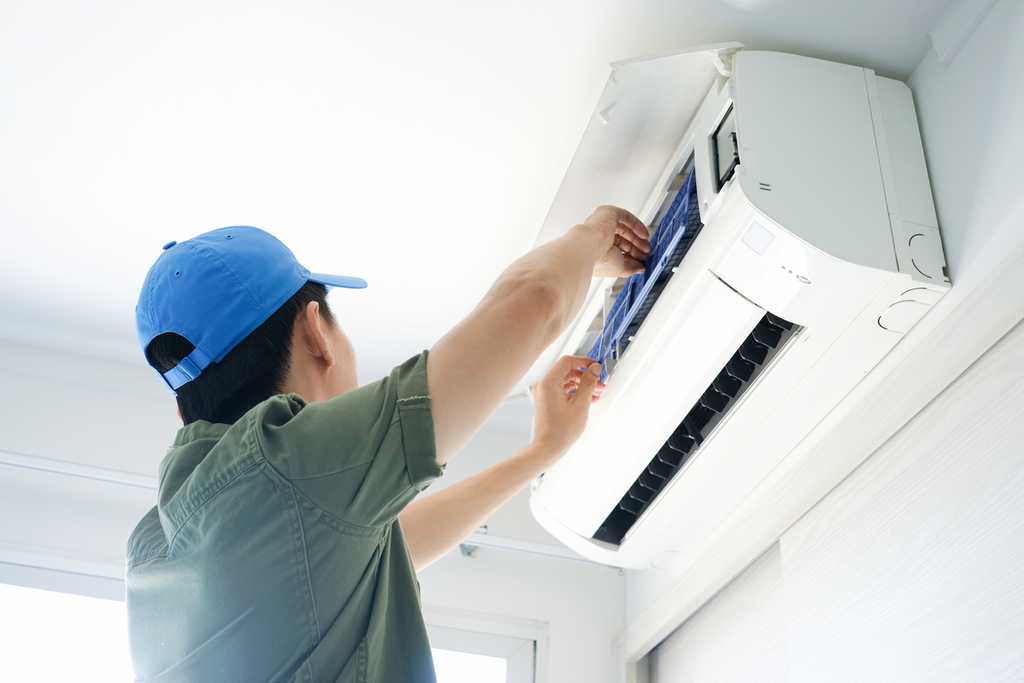A standard homeowners insurance policy offers coverage for your home and its contents. If a covered peril, or cause of loss, causes damage or destroys your home or personal belongings, your home insurance policy should cover the damages. As an appliance in your home, your heating, ventilation, and air conditioning (HVAC) system is covered against damage that occurs from a covered peril as written in your homeowners insurance policy.
When does homeowners insurance cover AC units?
Homeowners insurance covers your AC units from damage or destruction from a covered peril. Though coverage specifics can vary by insurance policy type and insurance company, most standard home insurance policies cover AC units from damage caused by:
- Fire
- Falling objects
- Lightning
- Power surges
- Smoke
- Theft
- Vandalism
- Wind
As a part of the home’s structure, the insurance company covers the central HVAC unit on an open peril, or all-risks, basis. This means unless the policy specifically excludes the peril, like earthquakes, flooding, and normal wear and tear, the policy will cover the damage.
However, if the AC unit is a window or wall-mounted unit, it is usually covered under personal property coverage. This means coverage is on a named perils basis, so unless the policy specifically includes the cause of loss, there is no coverage for the damage.
When does homeowners insurance not cover AC units?
Homeowners insurance does not cover AC units for normal wear and tear, neglect, age, and any specific exclusions outlined in the policy. When you file a claim, the initial cause of loss is key to understanding if the claim will be approved and paid.
For example, let’s say you come home from work one day and notice water on your basement floor. You realize the AC unit leaked and flooded the basement. So, what caused the AC unit to leak?
If the cause of the leak was neglect, lack of maintenance, or just equipment breakdown due to age, the insurer will probably deny your claim. But if the pipes froze and burst, damaging the home and your belongings, you may have coverage to fix the damage, but not to replace the pipes that failed or the entire unit if it needs replacing.
Just like earthquakes, flooding, and neglect aren’t covered, neither is rodent or pest damage. Regular maintenance and inspection for potential animal nests is key to ensure your HVAC longevity, avoiding a potential issue that causes damage not covered by your home insurance policy.
Consider equipment breakdown coverage or a home warranty
Most home insurance companies offer an optional coverage you can include in your policy called equipment breakdown coverage. This coverage extends to home appliances, such as HVAC systems, refrigerators, and computers, protecting them against equipment or mechanical breakdown or installation failures.
Equipment breakdown coverage is relatively inexpensive as a policy add-on coverage. Expect to pay between $25 to $50 per year to have this coverage on your homeowners insurance policy.
Another option is purchasing a home warranty. The cost of a home warranty varies considerably depending on your coverage level and the warranty provider. The average cost is $600 per year, but can range from $265 to over $1,400 annually. You should also expect to pay a service fee, or deductible, ranging from $55 to $150 per service call.
How to file an HVAC insurance claim
Before you file an HVAC insurance claim, consider the damage cost. If it is close to or less than your homeowners insurance deductible, it may not be worth it. But if the cost is more than your deductible, you should consider filing the claim.
Here’s how to file an HVAC insurance claim:
- Take photos of the HVAC damage and any damage caused to your home or belongings. Include photos of the serial number, model, and other identifying information.
- Start the claim with your insurance company over the phone, online, in person, or through the mobile app.
- Be specific and provide details about what damage occurred and what you believe caused the damage when you file the claim.
- The insurance adjuster assigned to your claim will contact you to set up a time to come survey the damage and work on an estimate for the cost of the damage, repairs, or replacement.
- If the claim is approved, they will discuss compensation with you. If you have a replacement cost value policy, you’ll be paid the full cost of repairs or replacement at today’s value. If you have an actual cash value policy, you’ll be paid the market value of the repairs or replacement, minus depreciation from age or wear and tear.
If you’re not sure if you have replacement cost (RCV) or actual cash value (ACV) coverage, you may want to speak with your agent before you file a claim. You can get a quote for damages from an HVAC contractor prior to filing the claim to decide if it’s worth filing.
Does insurance cover condensation damage?
Whether insurance covers condensation damage depends on the cause of the condensation. High air humidity levels in your home can cause condensation. Left unchecked, it could cause damage to your home and its contents.
Homeowners insurance covers damage that is sudden and accidental. If the cause of condensation damage is determined to be neglect to the home, lack of proper ventilation, or another non-covered peril, the insurance won’t cover the condensation damage.
If you notice moisture damage signs or condensation in your home, it’s best to tackle the issue right away to avoid more significant damage. Contact your insurance company to find out the specifics on if your homeowners policy covers condensation damage.

